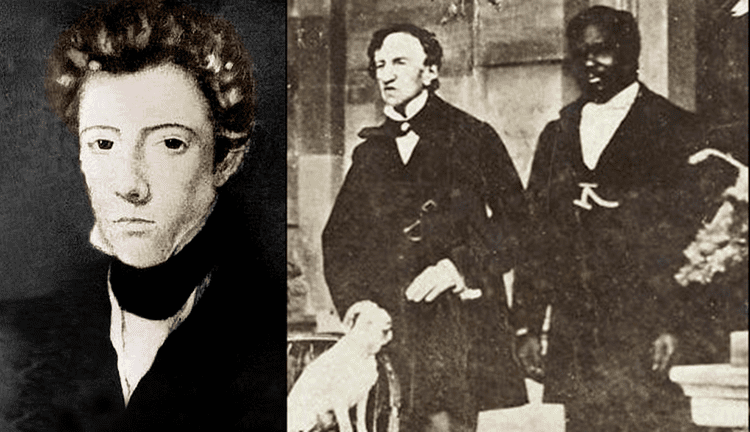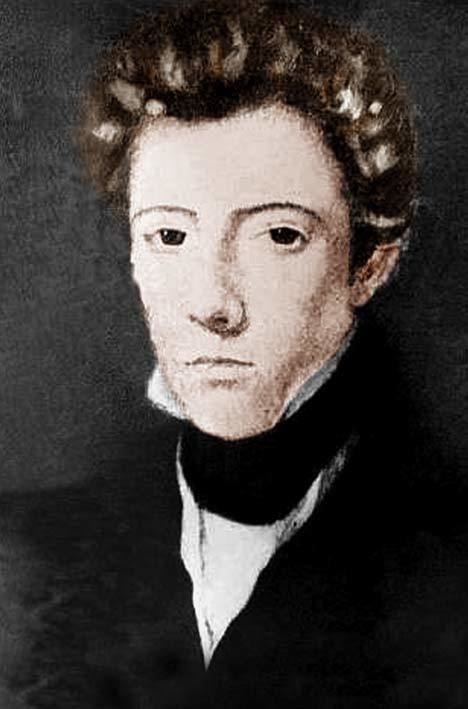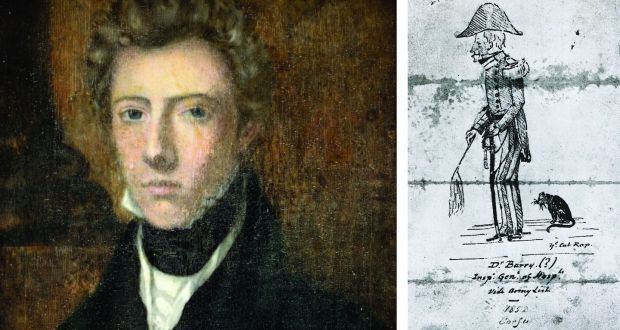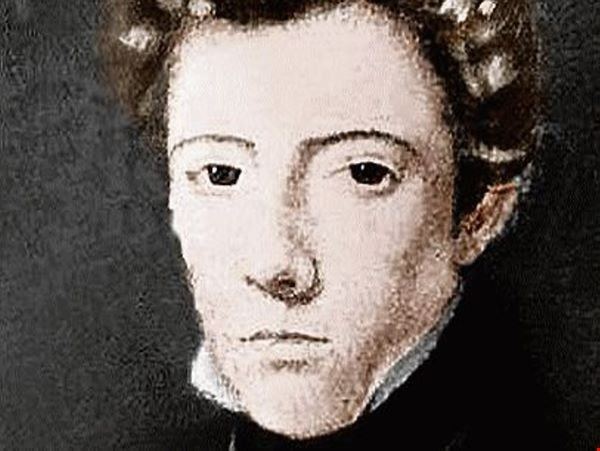Occupation surgeon Name James Barry | Role Surgeon | |
 | ||
Full Name Margaret Ann Bulkley Born c. 1789-1799 Ireland Other names James Miranda Stuart Barry Known for medical reforms, disputed gender Died July 25, 1865, London, United Kingdom | ||
The secret life of dr james barry
Dr. James Miranda Steuart Barry (1790s – 25 July 1865, born Margaret Ann Bulkley) was a military surgeon in the British Army, born in Ireland. Barry obtained a medical degree from the University of Edinburgh Medical School, then served first in Cape Town, South Africa and subsequently in many parts of the British Empire. Before retirement, Barry had risen to the rank of Inspector General (equivalent to Brigadier General) in charge of military hospitals, the second highest medical office in the British Army. Barry not only improved conditions for wounded soldiers, but also the conditions of the native inhabitants, and performed the first caesarean section in Africa by an Irish surgeon in which both the mother and child survived the operation.
Contents
- The secret life of dr james barry
- Historic pride james barry scotland s saga
- Early life
- Career
- Death
- Gender and personal life
- Intersex controversy
- In popular culture
- References

Although Barry's entire adult life was lived as a man, Barry was born Margaret Ann Bulkley and was known as female in childhood. Barry chose to live as a man in both public and private life at least in part in order to be accepted as a university student and pursue a career as a surgeon, the truth only becoming known to the public and to military colleagues after death. Barry is considered the first medically qualified British woman, preceding Elizabeth Garrett Anderson by over 50 years.

Historic pride james barry scotland s saga
Early life

Other than some personal correspondence, there are few sources of information about the non-military parts of Barry's life. The scant available evidence provides a skeleton onto which a great deal of myth and speculation has been added by various commentators. In his detailed research into Barry's early life, Michael Du Preez states that Barry was born in Cork in 1789, a birth date based on Mrs Bulkley's description of her child being fifteen years old in a letter dated 14 January 1805. Various other sources give birth dates of 1792, 1795, and 1799, but these incorrect dates are almost certainly the result of Barry later lying about age on official documents to aid passing as a man.

Barry was the second child born to Jeremiah and Mary-Ann Bulkley, and was given the name Margaret Anne. Mary-Ann Bulkley was the sister of James Barry, a celebrated Irish artist and professor of painting at London's Royal Academy. Jeremiah Bulkley ran the weigh house on Merchant's Quay, Cork. However, Anti-catholic sentiment led to him being dismissed from this post. This and subsequent financial mismanagement left Mary-Ann and Margaret Bulkley without the support of either Jeremiah Bulkley (whose debts led to him spending time in the Marshalsea prison in Dublin) or later the Bulkleys' married son John. A third child appeared in the Bulkley family and was named Juliana. Although presented as being Margaret Bulkley's sister, it is likely that she was Margaret's daughter as a result of childhood sexual assault, as the charwoman who discovered James Barry's sex when laying out the body stated that pregnancy stretch marks were present.

The teenage Margaret was educated with the prospect of becoming a governess, but given a lack of evidence of any work history, the Bulkleys appear to have struggled to find Margaret any suitable governess position. A conspiracy appears to have developed between Margaret, Mary-Ann Bulkley and some of the late James Barry's influential, liberal-minded friends (General Francisco de Miranda, Dr Edward Fryer, who had become Barry's personal tutor, and Daniel Reardon, the family's solicitor) to enable the teenage Margaret to enter medical school. The University of Edinburgh was chosen and Mary-Ann and Margaret boarded a Leith smack on 30 November 1809. This was the day that Margaret Anne Bulkley became "James Barry", "nephew" of the late James Barry RA the Irish romantic painter, dressed as a man. Barry never again returned to a female presentation, remaining a man for the next 56 years. In a letter to Daniel Readon, sent on 14 December, James Barry asked for any letters addressed to Margaret Bulkley to be forwarded to Mary-Ann Bulkley (whom Barry now refers to as "my aunt"), and mentions that '...it was very usefull [sic] for Mrs. Bulkley (my aunt) to have a Gentleman to take care of her on Board Ship and to have one in a strange country...'. Although the letter was signed "James Barry", the solicitor indiscreetly wrote on the back of the envelope 'Miss Bulkley, 14 December'; this crucial piece of evidence was the one which enabled researchers to finally confirm that Margaret Bulkley and James Barry were one and the same.
Arriving in Edinburgh in November 1809, Barry began studies at the Medical School as a 'literary and medical student'. Barry's short stature, unbroken voice, delicate features and smooth skin led many to suspect that Barry was a young boy not past puberty, and the University Senate initially attempted to block Barry's application for the final examinations due to this apparent youth. However, the Earl of Buchan, a friend of Dr Fryer and Barry's late namesake, persuaded the Senate to relent and Barry qualified Medicinae Doctor (MD) in 1812. Barry then moved back to London, signing up for the Autumn Course 1812/1813 as a pupil of the United Hospitals of Guy's and St Thomas', whose teachers included Henry Cline and celebrated surgeon Astley Cooper. On 2 July 1813, Barry successfully passed the examination of the Royal College of Surgeons of England.
Career
Upon joining the army, Barry was commissioned as a Hospital Assistant in the British Army on 6 July 1813, taking up posts in Chelsea and then the Royal Military Hospital in Plymouth, achieving a promotion to Assistant Surgeon to the Forces, equivalent to lieutenant, on 7 December 1815.
Following this military training, Barry was posted to Cape Town, South Africa in 1816. Through Lord Buchan, Barry had a letter of introduction to the Governor, Lieutenant General Lord Charles Henry Somerset. Following the successful, even spectacular, treatment of Lord Charles's sick daughter, Barry was welcomed into the family, maintained a close friendship with the Governor, and became his personal physician. In 1822 Somerset appointed Barry as Colonial Medical Inspector, an extraordinary jump in expectations from Barry's low military rank which brought with it great responsibility. Over ten years of work in the Cape, Barry effected significant changes, among them improvements to sanitation and water systems, improved conditions for slaves, prisoners and the mentally ill, and provision of a sanctuary for the leper population. Barry also performed one of the first known successful Caesarean sections in which both mother and child survived; the child was christened James Barry Munnik in Barry's honour, and the name was passed down through the family, leading to Barry's name being borne by a later Prime Minister of South Africa, J. B. M. Hertzog. Barry also gained enemies by criticising local officials and their handling of medical matters, but the advantage of a close relationship with the Governor meant that the repercussions of these outspoken views were usually smoothed over.
Barry was promoted to Surgeon to the Forces on 22 November 1827. Barry's subsequent posting was to Mauritius in 1828. In 1829, Barry risked a great deal of trouble by going absent without leave to return to England and treat Somerset, who had fallen ill, and remained there until his death in 1831. Barry's subsequent posting was to Jamaica, and then the island of Saint Helena in 1836. At St Helena, one clash with a fellow army surgeon resulted in Barry being arrested and court-martialled on a charge of "conduct unbecoming of the character of an Officer and a Gentleman". Barry was found not guilty, and honourably acquitted.
In 1840 Barry was posted to the Leeward Islands and Windward Islands of the West Indies, there focusing on medicine, management and improving the conditions of the troops, and receiving a promotion to Principal Medical Officer. In 1845, Barry contracted yellow fever and left for England for sick leave in October. After being cleared for duty, Barry was posted to Malta in 1846. Here Barry was severely reprimanded for inexplicably taking a seat in the local church that was reserved for the clergy, and had to deal with the threat - and eventual actuality - of a cholera epidemic, which broke out in 1850.
The following posting was to Corfu in 1851, which brought with it a promotion to the rank of Deputy Inspector-General of Hospitals on 16 May, equivalent to lieutenant colonel. From here, Barry temporarily visited the Crimea on leave - as a request to be posted there officially had been denied - where a famous altercation took place between Barry and Florence Nightingale at Scutari Hospital. Finally, in 1857 Barry was posted to Canada, and granted the local rank of Inspector General of Hospitals (equivalent to Brigadier General) on 25 September. In that position, Barry fought for better food, sanitation and proper medical care for prisoners and lepers, as well as soldiers and their families. This local rank was confirmed as substantive on 7 December 1858.
Wherever Barry served across the British Empire, improvements were made to sanitary conditions and the conditions and diet of both the common soldier and other, under-represented groups. Barry was outraged by unnecessary suffering, and took a heavy-handed and sometimes tactless approach to demanding improvements for the poor and underprivileged which often incited anger from officials and military officers; on several occasions Barry was both arrested and demoted for the extremity of this behaviour. Barry held strict and unusually modern views about nutrition, being completely vegetarian and teetotal, and, while keeping most personal relationships distant, was very fond of pets, particularly a beloved poodle named Psyche.
Death
Despite protesting the decision, Barry was forcefully retired by the army on 19 July 1859 due to ill health and old age, and was succeeded as inspector general of hospitals by David Dumbreck. After a quiet retirement in London, Barry finally died from dysentery on 25 July 1865. The identity of the woman who discovered the truth of Barry's sex is disputed, but she was probably a charwoman who also laid out the dead. The charwoman, after failing to elicit payment for her services, sought redress in another way; she visited Barry's physician, Major D. R. McKinnon, who had issued the death certificate upon which Barry was identified as male. The woman claimed that Barry's body had been physically female and had marks suggesting Barry had at one point borne a child. When McKinnon refused to pay her, she took the story to the press, and the situation became public. It was discussed in an exchange of letters between George Graham of the General Register Office, and Dr McKinnon.
Sir,
It has been stated to me that Inspector-General Dr James Barry, who died at 14 Margaret Street on 25 July 1865, was after his death found to be female.
As you furnished the Certificate as to the cause of his death, I take the liberty of asking you whether what I have heard is true, and whether you yourself ascertained that he was a woman and apparently had been a mother?
Perhaps you may decline answering these questions; but I ask them not for publication but for my own information.
Your faithful servant
George Graham
McKinnon's response was as follows:
Sir,
I had been intimately acquainted with the doctor for good many years, both in London and the West Indies and I never had any suspicion that Dr Barry was a woman. I attended him during his last illness, (previously for bronchitis, and the affection for diarrhoea). On one occasion after Dr Barry’s death at the office of Sir Charles McGregor, there was the woman who performed the last offices for Dr Barry was waiting to speak to me. She wished to obtain some prerequisites [sic in source, but has to be a slip for perquisites, "perks"] of his employment, which the Lady who kept the lodging house in which Dr Barry died had refused to give her. Amongst other things she said that Dr Barry was a female and that I was a pretty doctor not to know this and she would not like to be attended by me. I informed her that it was none of my business whether Dr Barry was a male or a female, and that I thought that she might be neither, viz. an imperfectly developed man. She then said that she had examined the body, and was a perfect female and farther that there were marks of him having had a child when very young. I then enquired how have you formed that conclusion. The woman, pointing to the lower part of her stomach, said ‘from marks here. I am a maried [sic] woman and the mother of nine children and I ought to know.’
The woman seems to think that she had become acquainted with a great secret and wished to be paid for keeping it. I informed her that all Dr Barry’s relatives were dead, and that it was no secret of mine, and that my own impression was that Dr Barry was a Hermaphrodite. But whether Dr Barry was a male, female, or hermaphrodite I do not know, nor had I any purpose in making the discovery as I could positively swear to the identity of the body as being that of a person whom I had been acquainted with as Inspector-General of Hospitals for a period of years.
Yours faithfully,
D.R. McKinnon
After the matter was made public, many people claimed to have "known it all along". The British Army, seeking to suppress the story, sealed all records of Barry for the next 100 years. The historian Isobel Rae gained access to the army records in the 1950s, and concluded that Barry was the niece of James Barry the painter. Barry was buried in Kensal Green Cemetery under the name James Barry and full military rank. It was claimed by several sources that the manservant who always attended Barry returned to Jamaica, but his actual fate is unknown.
Gender and personal life
In a letter chiding John Bulkley, Margaret's older brother, for abandoning legal studies for the military, 19-year-old Margaret wrote "Was I not a girl I would be a Soldier!".
Barry's interest in medicine was probably encouraged by the liberal-minded friends of the late James Barry RA, and just before travelling to Edinburgh to enroll as a medical student in 1809, Barry assumed a male identity. A short stature, slight build, unbroken voice, delicate features and smooth skin led others to suspect that Barry was not a man but a pre-pubescent boy. This identity was maintained through surgical training and recruitment into the British Army which, at officer rank level, did not then require a medical examination.
During Barry's first posting abroad to Cape Town in South Africa, Barry became a close friend of the Governor, Lord Charles Somerset, and his family. It has been suggested that Lord Charles discovered Dr Barry's secret and that the relationship was more than friendship. Their closeness led to rumours and ultimately a libel briefly appearing on a bridge post in Cape Town on 1 June 1824 saying that the writer had "detected Lord Charles buggering Dr Barry", which led to a court trial and investigation, as homosexuality was at that time strictly illegal. Despite these allegations, if Somerset was aware of Barry's sex, he did not reveal it.
Despite efforts to appear masculine, witness reports comment on Barry's effeminacy and on a somewhat contradictory reputation - Barry had a reputation for being tactless, impatient, argumentative and opinionated, but was also considered to have had a good bedside manner and famous professional skill. Barry's temper and bravado led to a famous pistol duel with Captain Josias Cloete of the 21st Light Dragoons. Barry's aim was better, the bullet striking Cloete's shako military cap and removing its peak, which dissipated its force. During the Crimean War (1854–1856), Barry got into an argument with Florence Nightingale. After Barry's death Nightingale wrote that:
I never had such a blackguard rating in all my life – I who have had more than any woman – than from this Barry sitting on his horse, while I was crossing the Hospital Square with only my cap on in the sun. "He" kept me standing in the midst of quite a crowd of soldiers, Commissariat, servants, camp followers, etc., etc., every one of whom behaved like a gentleman during the scolding I received while "he" behaved like a brute . . . After "he" was dead, I was told that (Barry) was a woman . . . I should say that (Barry) was the most hardened creature I ever met.
Barry would never allow anyone into the room while undressing, and repeated a standing instruction that "in the event of his death, strict precautions should be adopted to prevent any examination of his person" and that the body should be "buried in [the] bed sheets without further inspection", indicating a desire to conceal physical sex both in life and in death. We Are Family, an LGBT magazine, argues that this is strong evidence of Barry's purported identity as a transgender man, given that "his wish was to die and be remembered as a man."
Intersex controversy
A. K. Kubba and M. Young picked up on Major McKinnon's statement that he did not know whether Barry was "male, female or hermaphrodite" [vide supra] and suggested that it might be more appropriate to say that Barry was "hermaphrodite" [or intersex] rather than "female", and "may have had ambiguous genitalia". These suppositions are based on the premise that "Concealment of one's sex for ... 40 years in the British Army, is simply unbelievable". However, M. du Preez and J. Dronfield show how Barry might have been able to conceal this secret from all but a few people, and those who did know did not reveal it while Barry was alive. N. Turner has commented on Kubba and Young's conclusion that the belief in an intersex condition was based on "vanishingly slim evidence".
Biographer R. Holmes also raises the possibility of Barry being intersex, but prefers to acknowledge the impossibility of knowing, expressing surprise that this is a problem for so many people. The suggestion that James Barry may have been intersex has been criticised for both biological and social reasons. In a review of Holmes' biography by Irvine Loudon, the implication that Barry might have been intersex is firmly rejected.
Dr. Jana Funke, among other LGBT theorists, has argued that the intersex theory is an attempt to impose cisgender male characteristics onto Barry so as to undermine the concept that a transgender man could have achieved as much as Barry did.
In popular culture
The character of Barry has been played by Anna Massey in an episode of the BBC drama-documentary A Skirt Through History.
Barry's life is the subject of the historical novel James Miranda Barry (published in the USA as The Doctor) by Patricia Duncker.
The Canadian aspect of Barry's career was dramatised in an episode of the series Heritage Television, produced by then-independent superchannel CHCH in Hamilton, and hosted by Canadian historian Pierre Berton.
A 2004 play, Whistling Psyche by Sebastian Barry, imagines a meeting between James Barry and Florence Nightingale.
A song by contemporary folk duo Gilmore & Roberts, Doctor James, retells selected events from the life story of Doctor James Barry. The song was released on the album The Innocent Left on Navigator Records, October 2012.
The town of Barrydale in the Klein Karoo region of South Africa was named in Barry's honour.
An episode of the podcast "Sawbones" by Justin and Dr Sydnee McElroy focuses on Barry's life and achievements.
